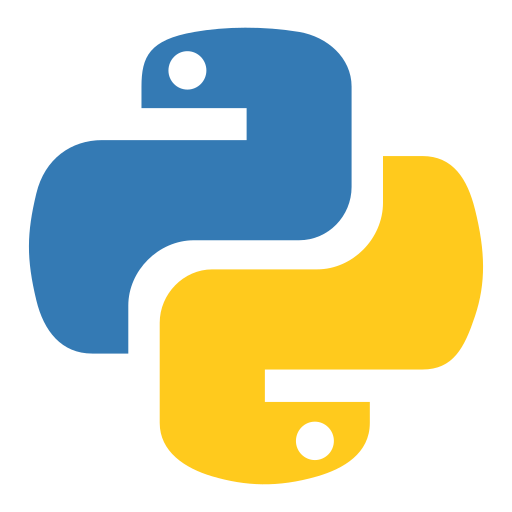DSPy Guide v2024.2.7-NLP pipeline framework
AI-powered NLP pipeline automation
Related Tools
Load More
Advanced Python Assistant
A friendly Python programming assistant, ready to assist you.

Digital Signal Processing Tutor
A DSP Tutor for upper-division and graduate students, offering detailed, patient explanations.

Data Dynamo
A friendly data science coach offering practical, useful, and accurate advice.
Python Coding Companion
Assists in creating and understanding python applications and scripts.

DSPy Guide v2024.1.31
Guides in understanding and applying DSPy for advanced language model systems.

SD Pilot
I refine AI art prompts for Stable Diffusion model.
20.0 / 5 (200 votes)
Introduction to DSPy Guide v2024.2.7
DSPy Guide v2024.2.7 is a sophisticated framework designed to streamline the process of building and optimizing neural network models, specifically focusing on natural language processing tasks. The core philosophy of DSPy is to move away from manual prompt engineering and towards a more systematic, modular approach. By leveraging the power of large language models (LMs) and retrieval models (RMs), DSPy provides a set of tools for defining, testing, and refining complex pipelines that handle various NLP tasks. For example, consider a scenario where a developer needs to create a system that answers factoid questions based on a large text corpus. DSPy simplifies this by allowing the user to define modular components like retrieval and answer generation, which can then be combined and optimized using provided frameworks such as BootstrapFewShotWithRandomSearch. This modularity and automation make it easier to adapt and improve models based on new data or requirements, without extensive manual tweaking.

Main Functions of DSPy Guide v2024.2.7
Pipeline Definition and Modular Components
Example
Defining a pipeline for answering questions using retrieval-augmented generation (RAG).
Scenario
A developer working on a QA system can use DSPy to define a modular pipeline where one module retrieves relevant passages from a corpus and another generates an answer based on those passages. This modular approach allows for easy swapping and testing of different retrieval or generation strategies.
Bootstrapping and Dynamic Prompt Generation
Example
Using BootstrapFewShot to compile and optimize a RAG program.
Scenario
In a real-world setting, a team working on customer support automation can use DSPy to bootstrap a few-shot learning system. This system dynamically updates prompts based on performance metrics, ensuring that the model improves over time with minimal manual intervention.
Validation and Evaluation Metrics
Example
Validating a QA system using exact match and passage match metrics.
Scenario
A research team validating their information retrieval system can employ DSPy's built-in evaluation metrics to ensure that the system not only retrieves relevant documents but also generates accurate answers. This is crucial for applications like legal document analysis, where precision and recall are paramount.
Ideal Users of DSPy Guide v2024.2.7
Machine Learning Researchers
Researchers in the field of machine learning and NLP will find DSPy particularly beneficial due to its modular approach to model building and evaluation. The ability to quickly prototype, test, and refine models based on performance metrics can significantly accelerate research and development cycles.
Data Scientists and Engineers
Data scientists and engineers working on real-world NLP applications, such as chatbots, virtual assistants, or automated customer support systems, will benefit from DSPy's ability to streamline the development process. The framework's emphasis on modularity and dynamic prompt generation helps in rapidly adapting to new datasets and improving system performance over time.

How to Use DSPy Guide v2024.2.7
1
Visit aichatonline.org for a free trial without login, also no need for ChatGPT Plus.
2
Familiarize yourself with the DSPy framework by exploring the provided documentation and tutorials on the website.
3
Install necessary dependencies such as PyTorch and DSPy library to set up your development environment.
4
Load your dataset and configure the DSPy settings for your specific use case, such as QA or retrieval-augmented generation.
5
Use predefined modules or create custom modules, and compile your program using DSPy’s teleprompter for efficient model execution.
Try other advanced and practical GPTs
Proxmox Guru
AI-powered guidance for Proxmox VE.

🌟 Imersão em Data Science Dr. Data Pro🌟
AI-powered expert in Data Science and IoT
Library of Babel
Discover Your Next Read with AI

Data Converter
AI-Powered Data to CSV Transformation

Stronk Coder
AI-Powered Roblox Development Support

Prompt Bug Buster
AI-powered prompt engineering for perfect results

Fastgen Code Companion
AI-powered code optimization and integration.

Tatoo Master
AI-powered tattoo design inspiration.

OpenFOAM Assistant
AI-Powered Guidance for OpenFOAM Users

Redação Nota MIL
AI-powered tool for perfect essays.

ArtDirectorのミサト・キタガワ
AI-powered visual strategy for creative projects.

Photo Realistic GPT
Create stunning images from text with AI.

- Data Retrieval
- Model Training
- Prompt Engineering
- QA Systems
- NLP Pipelines
Frequently Asked Questions about DSPy Guide v2024.2.7
What is DSPy Guide v2024.2.7?
DSPy Guide v2024.2.7 is a framework designed for creating sophisticated NLP pipelines using natural language texts, leveraging a combination of language models and retrieval models.
How does DSPy Guide streamline neural network programming?
DSPy Guide uses modular components and optimizers, such as ChainOfThought and BootstrapFewShotWithRandomSearch, to dynamically generate and update prompts based on modifications in code, data, or metrics, reducing the need for manual prompt tuning.
What are common use cases for DSPy Guide v2024.2.7?
Common use cases include question answering systems, retrieval-augmented generation tasks, and other NLP applications that require integrating retrieval models with language models for enhanced accuracy.
What datasets are supported by DSPy Guide v2024.2.7?
DSPy Guide supports various datasets, including HotPotQA for training and evaluation. Users can also load and configure custom datasets for their specific needs.
How can I validate my DSPy program's output?
DSPy provides validation logic and evaluation metrics, such as exact match and passage match, to ensure that the predicted answers are accurate and the retrieved contexts are relevant.